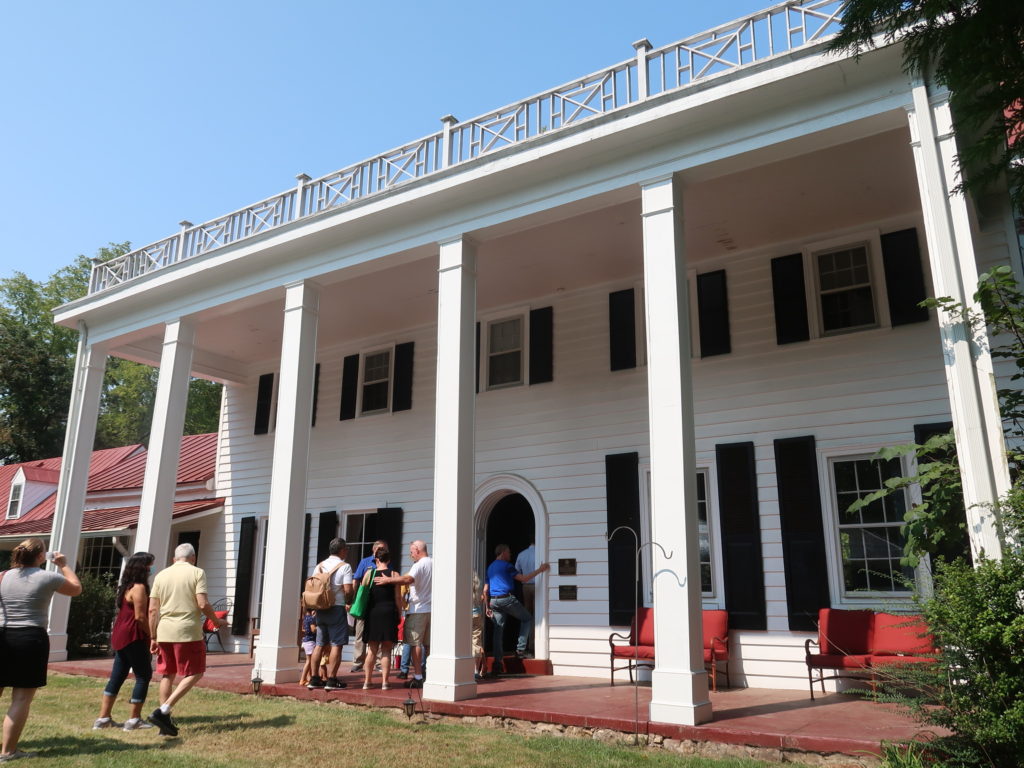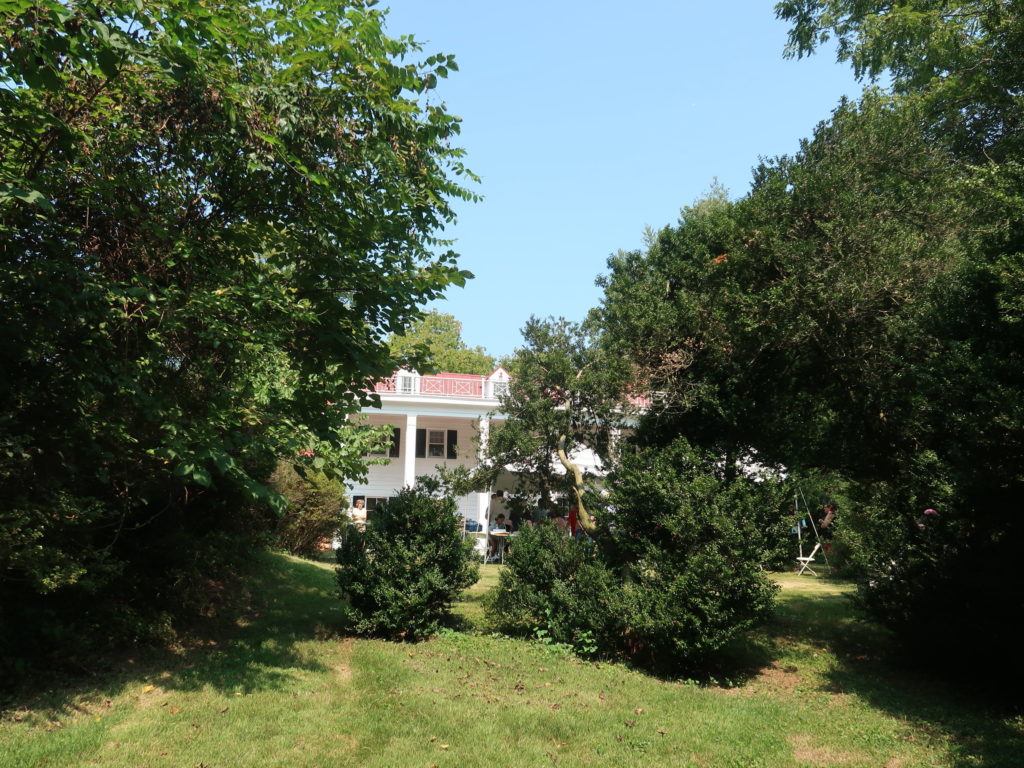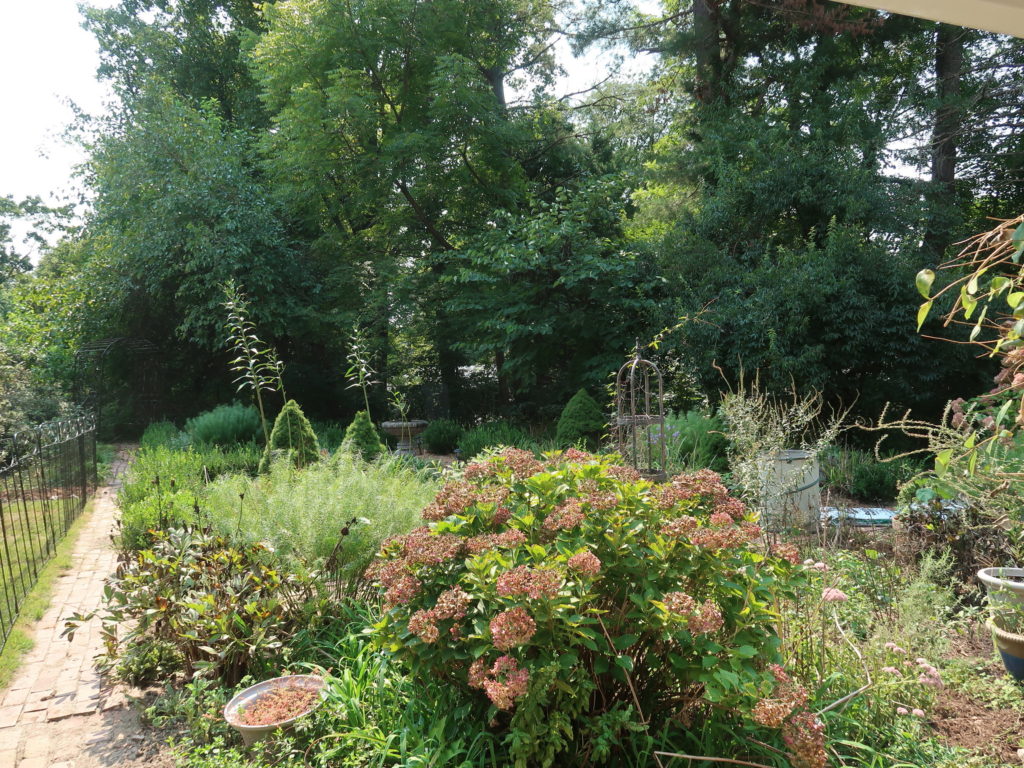Oak Hill Day offers a history lesson

For the first time since before the Covid pandemic, the community got a chance to explore Oak Hill in person.
The Oak Hill property in Annandale is the last remaining remnant of the 24,000-acre Ravensworth Tract granted to William Fitzhugh in 1685.
On Oak Hill Day, on Sept. 17, local residents toured the first floor of the privately owned plantation house, viewed displays and listened to presentations on Fairfax County history, and enjoyed cookies made by Annandale High School culinary students.
At one table hosted by the Fairfax County Park Authority, children practiced cursive writing with quill pens like those used by early settlers.

The current owners of Oak Hill, Laura and Joseph Braceland, bought the property in 2017. As part of an easement, they are required to open their home to the public once a year.
“We viewed the house on a whim and fell in love with it,” Laura Braceland said.
The Oak Hill plantation house was built in the Georgian style in about 1790 by Richard Fitzhugh, a descendant of William Fitzhugh.
His son, David Fitzhugh, who inherited 345 acres, conducted an inventory in 1856 that listed 41 enslaved people.
Related story: New residents of Oak Hill enjoy ‘owning a piece of history’
While it’s important to appreciate the history and the beautiful home and landscaping, “we also have to reckon with the fact that this a place where human beings were held in bondage,” said Braddock Supervisor James Walkinshaw. “Holding those two realities in our hands at the same time is a challenge.”

Walkinshaw said some of the enslaved people who lived there were Sarah and her four children and Helen and her two children. “Shortly after the Civil War, three formerly enslaved people bought parcels of land here and lived here in freedom, just years after being held in bondage,” he added.
The house was renovated in the Colonial Revival style in the 1930s and 40s by renowned restoration architect Walter Macomber.
In the early 2000s, there was a proposal to subdivide what was left of the property, at the corner of Wakefield Chapel Road and Braeburn Road, into four or five lots, said Elizabeth Crowell, manager of the Archeology and Collections Branch at the Fairfax County Park Authority. The house would have been retained, but the huge 200-year-old boxwoods would have been demolished.

In 2004, the Board of Supervisors, the Fairfax County Park Authority, and Seville Homes agreed to establish historic and conservation easements to preserve the property. That year, the house was also listed in the National Register of Historic Places.
Saving Oak Hill “was not a slam dunk,” said former Board of Supervisors chair Sharon Bulova, who worked on preserving the property. Even some supervisors didn’t see the value in saving it.
Oak Hill is the only one of the three plantation houses on the Ravensworth Tract to survive. The others are Ravensworth and Ossian Hall. The fire department burned down Ossian Hall in a training exercise.


Did they have slaves on the property?
From the text above: ‘His son, David Fitzhugh, who inherited 345 acres, conducted an inventory in 1856 that listed 41 enslaved people.’ More details follow this statement.
Did you read the story or are you just trying to stir the pot? RTFS.
It is a great opportunity to see some of the history in our midst!